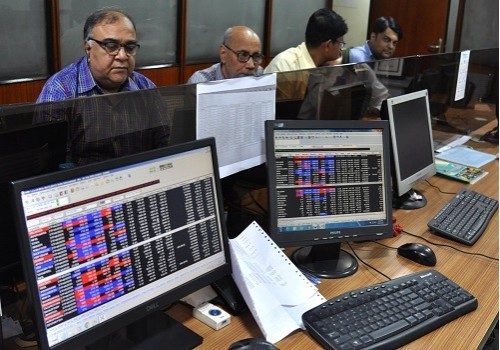Monthly Debt View for March 2023 by Pankaj Pathak, Quantum AMC

Follow us Now on Telegram ! Get daily 10 - 12 important updates on Business, Finance and Investment. Join our Telegram Channel
Below Monthly Debt View for March 2023 by Pankaj Pathak, Fund Manager- Fixed Income, Quantum Mutual Fund
Bond yields moved up in February due to hawkish RBI commentary, higher than expected inflation print, and a sharp jump in the US treasury yield. Tightness in the money markets ahead of the financial year closing also dampened the market sentiment.
The 10-year Indian government bond (Gsec) yield rose 11 basis points (1%=100 basis points) in February to close at 7.46% on February 28, 2023. The Gsec yield curve flattened as the front-end yields jumped higher than longer-tenor bond yields. The 1-year Gsec yield moved up 53 basis points from 6.77% to 7.30%. The gap between the 10-year and 1-year Gsec yields shrunk to 16 basis points on February 28, 2023. This spread was around 58 basis points a month back.
Money market rates also surged higherdue to continued reduction in the core liquidity and lack of demand for short-term papers ahead of the financial year closing. A sustained wide gap between credit and depositgrowth in the banking system also contributed to a rise in short-term interest rates.
The 3 months treasury bill yield moved up from 6.48% on January 31, 2023,to 6.91%by February 28, 2023. While the yield on 3 months maturity Certificate of deposits (CD)/commercial papers (CPs) of AAA-rated PSUsjumped from 7.15% to 7.50%.
Banking system liquidity remained in deficit for the most part in February. The core liquidity which excludes the government balance continued to decline due to seasonal increases in cash withdrawals and the RBI’s forex sale. The core liquidity is still in surplus of around Rs. 1.6 trillion (as of February 24, 2023).
Based on historical trends, currency in circulation may increase further till June. Thus, there is a high possibility of further tightening of liquidity conditions in the coming months.
The Consumer Price inflation rose to 6.5% YoY in January 2023 vs 5.72% in the previous month. The actual CPI number was significantly higher than the market consensus estimate of 5.9%. A large part of the upside surprise was contributed by an abnormally high MoM jump in cereals & products and a lesser than expected seasonal drop in vegetable prices. Core Inflation remained elevated at 6.1%.
Going forward inflation is expected to trend down on a favourable base effect, stabilising commodity prices and declining pricing power due to slow demand recovery. We expect headline CPI inflation to fall to around 5% mid of this year and average around 5.3% in FY24.
Given a sharp jump in headline CPI inflation, the bond market is now pricing for another 25 basis points of a rate hike by the RBI in the April MPC meeting.
In the last 10 months, the repo rate has been hiked by cumulative 250 basis points and the short-term money market rates have moved up by over 300 basis points. The full impact of these measures is yet to be seen.
Based on the RBI’s 1 year ahead inflation estimate of 5.6%, the real repo rate is currently at 90 basis points and the real rate on a 1-year treasury bill is around 130 basis points. In our opinion, these levels'real rates areadequate for the current state of economic growth.
Also, there is no evidence of inflation expectation getting unanchored as price passthrough by producers is muted and services inflation remains benign. Thus, we are of the opinion that further rate hikes will not be needed and if at all comes, will be revered soon.
We continue to expect the bond yields to come down over the medium term with improvement in external and fiscal balances and falling inflation. In the near term, yields may remain in a tight range with 10-year Gsec trading between 7.2%-7.5%.
Given the fact that much of the rate hikesare already delivered and the starting yields on bonds are between 7.3%-7.5%, bond funds are likely to perform better over the coming 2-3 years. Investors with a 2-3 years investment horizon and some appetite for intermittent volatility, can continue to hold or add to dynamic bond funds.
Dynamic bond funds have the flexibility to change the portfolio positioning as per the evolving market conditions. This makes dynamic bond funds better suited for long-term investors in this volatile macro environment.
Investors with shorter investment horizons and low-risk appetite should stick with liquid funds. Rate hike and continued reduction in durable liquidity surplus is positive for short-term debt fund categories like the liquid fund. We would expect further improvement in the return potential of these categories as interest accrual on short-term debt instruments has risen meaningfully.
Since the interest rate on bank saving accounts are not likely to increase quickly while the returns from the liquid fund are already seeing an increase, investing in liquid funds looks more attractive for your surplus funds.
Investors with a short-term investment horizon and with little desire to take risks should invest in liquid funds which own government securities and do not invest in private sector companies which carry lower liquidity and higher risk of capital loss in case of default.
Above views are of the author and not of the website kindly read disclaimer










Tag News

We anticipate immense potential benefits from the upcoming Sovereign Gold Bond Tranche in FY...













